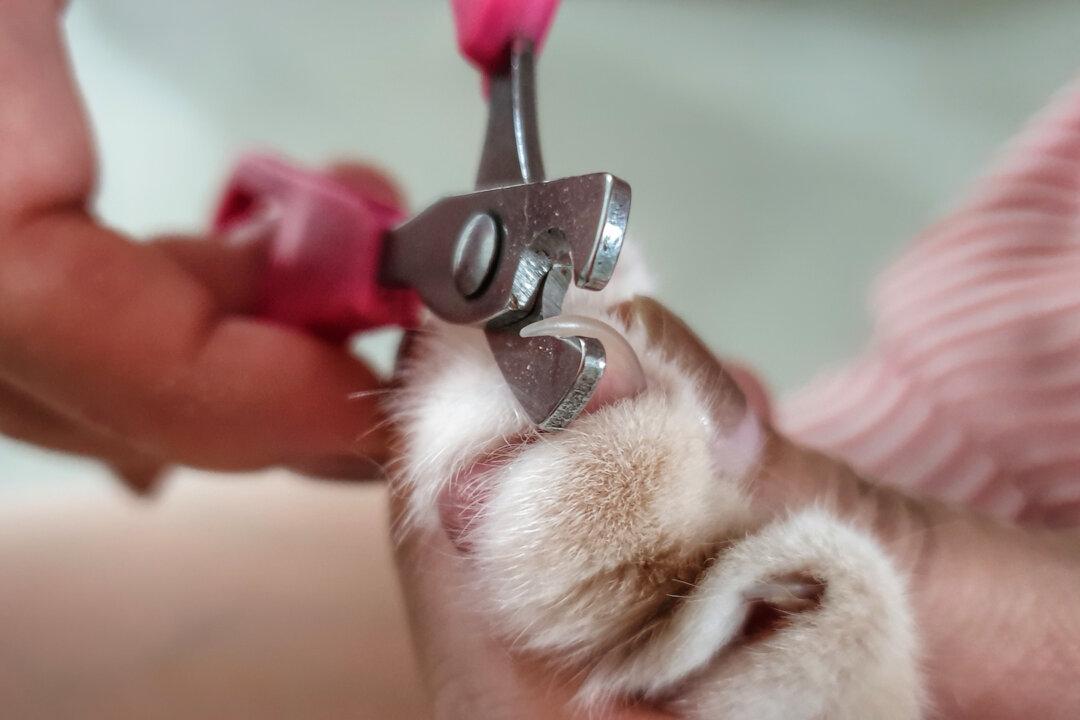Q: I adopted a calico cat from a shelter that named him Joseph for his coat of many colors. My veterinarian was surprised when she examined him and confirmed he was a male, because she said calico cats are almost always female. Why is that?
A: Calico cats have orange, black, and white fur, while tortoiseshell cats, or torties, sport orange and black fur. Because of the genes that code for coat color, both types of cats are almost always female.
Domestic cats have approximately 20,000 genes on 38 chromosomes, two of which are the sex chromosomes X and Y. Females have two X chromosomes and are referred to as XX. Males have one X and one Y chromosome and are called XY.
Approximately 20 genes determine coat color in cats. The two basic colors are black and orange, sometimes called red. White is the absence of both colors. Other colors are modifications of the two basic colors; for example, gray is the dilute version of black.
The gene for black fur sits on an X chromosome; the gene for orange fur also resides on an X chromosome, but not the same one. So, a cat with black and orange fur must have two X chromosomes and therefore be a female.
A male cat may be either black or orange, but not both—unless he has a chromosomal abnormality.
A calico or tortie will be a male if he has two X chromosomes, which give rise to the black and orange fur, plus a Y chromosome that produces male genitalia.
This XXY condition is rare in cats, which explains why your veterinarian was so surprised to see Joseph’s coat of many colors. Fortunately, XXY cats are healthy and not at risk of medical or behavioral problems.
Q: Whenever my dog Dolly swims, her ears become infected. My veterinarian suggested I clean her ears after swimming to prevent infections, but I didn’t think to ask how. What’s your advice?
A: Dogs’ ear canals are L-shaped internally. Water that enters the canals while the dog is swimming or being bathed settles at the bottom of the L, where it’s dark, warm, and moist, perfect conditions for bacteria and yeast to proliferate.
You can prevent water entry during bathing by occluding Dolly’s ear canals with cotton balls. But that doesn’t work for swimming, so when she returns home from a swim, you'll need to clean her ears to remove the water.
For routine cleaning, it’s best to use an unmedicated ear cleaner recommended by your veterinarian. Medicated cleaners work well when the ear is infected, but in a healthy ear, they kill the good bacteria, allowing pathogenic bacteria and yeast to overgrow.
Don’t use alcohol, which stings, or hydrogen peroxide, which breaks down to oxygen and water, leaving the ear canal moist.
Raise Dolly’s ear flap to straighten her L-shaped ear canal. Fill her canal with ear cleaner and massage the base of her ear to loosen any water, wax and other debris.
Let go of her ear flap and allow her to shake her head. She'll shake debris from deep in her ear canal onto her ear flap, where you can easily remove it with cotton balls or tissues.
Don’t insert a cotton swab into her ear canal because it can push debris deeper into the canal and damage her eardrum.
Throughout the process, reward Dolly with praise and kisses so she’s always happy to have her ears cleaned.







